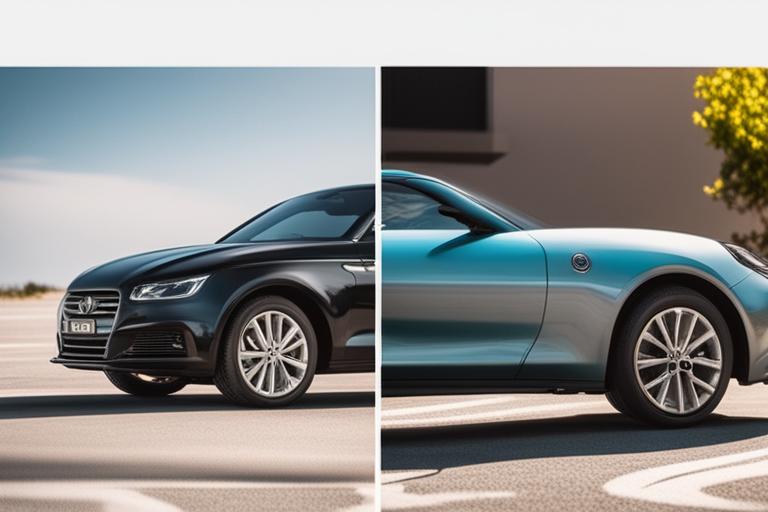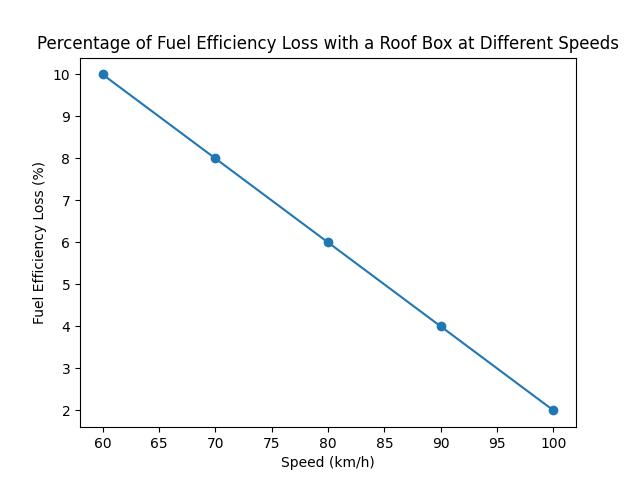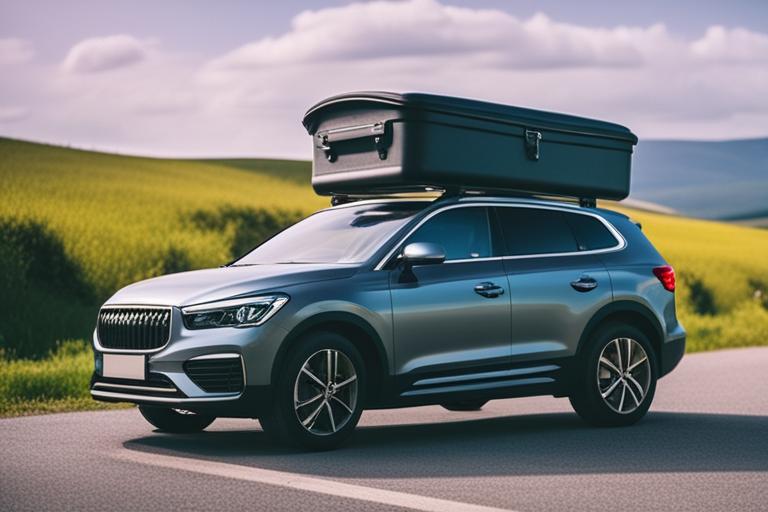
If you’re an avid traveler or someone who frequently needs to transport large items, you’ve likely considered purchasing a roof box for your car. A roof box is an easy and convenient accessory that attaches to the roof of your car, providing extra storage space for luggage, equipment, or any other items you need to transport. While roof boxes are a popular accessory for many drivers, it’s important to understand that they can have an impact on fuel economy. In this guide, we’ll explore the various factors that affect roof box fuel economy, as well as tips for improving fuel efficiency and selecting the right roof box for your needs.
Tips for Maximizing Fuel Efficiency with a Roof Box
Learn how to improve fuel economy with a roof box by understanding the factors that affect it, selecting the right roof box, and implementing best practices for proper installation and cargo management.
– Factors that Affect Roof Box Fuel Economy
– Aerodynamics of a Car with a Roof Box
– Impact of a Roof Box on Fuel Economy
– Weight of the Roof Box and Cargo
– Speed at Which the Car is Driven
– Type of Vehicle
– How to Improve Fuel Economy with a Roof Box
– Choosing the Right Roof Box
– Proper Installation of the Roof Box
– Reducing the Weight of the Cargo
– Driving at a Slower Speed
– Removing the Roof Box When Not in Use
– Tips for Selecting a Roof Box
– Size and Shape of the Box
– Weight Capacity
– Compatibility with the Car’s Roof Rack
– Aerodynamic Design
– Material
Factors that Affect Roof Box Fuel Economy

Aerodynamics of a Car with a Roof Box
One of the primary factors that affect roof box fuel economy is aerodynamics. A roof box creates additional wind resistance, which can cause your car to work harder and burn more fuel. The more aerodynamic your car is, the less impact the roof box will have on fuel economy. Cars with a more rounded and streamlined shape tend to be more aerodynamic, while boxier cars may experience more of an impact from a roof box.

Impact of a Roof Box on Fuel Economy
In addition to aerodynamics, the size and weight of the roof box itself can also impact fuel economy. Larger, heavier roof boxes will have a greater impact on fuel efficiency than smaller, lighter boxes. Additionally, the type of cargo you’re transporting can also affect fuel economy. Items that are more aerodynamic, such as luggage or sports equipment, will have less of an impact on fuel efficiency than bulky or irregularly shaped items.
Statistics on Fuel Efficiency Loss with a Roof Box
According to a study by the Automobile Association (AA), a roof box can cause fuel economy to drop by as much as 20%. The study found that a roof box increases wind resistance and drag, which causes the car’s engine to work harder and burn more fuel. The impact on fuel efficiency will vary depending on the size and weight of the roof box, as well as the type of car and driving conditions.
Weight of the Roof Box and Cargo
Another important factor to consider when it comes to roof box fuel economy is weight. The heavier your car is, the more fuel it will require to move. Adding a roof box to your car will increase its weight, which can cause fuel economy to suffer. To minimize the impact on fuel efficiency, it’s important to choose a roof box that is as light as possible, and to only carry the items you need.
Speed at Which the Car is Driven
The speed at which you drive can also affect fuel economy with a roof box. The faster you drive, the more wind resistance your car will encounter, which can cause it to burn more fuel. To maximize fuel efficiency, it’s important to drive at a moderate speed and avoid excessive acceleration or braking.
Type of Vehicle
Finally, the type of vehicle you’re driving can also impact roof box fuel economy. Smaller, more fuel-efficient cars tend to be more affected by a roof box than larger, more powerful cars. If you’re driving a smaller car, it’s important to choose a roof box that is as lightweight and aerodynamic as possible.

How to Improve Fuel Economy with a Roof Box
Now that we’ve explored the various factors that affect roof box fuel economy, let’s take a look at some tips for improving fuel efficiency with a roof box.
Choosing the Right Roof Box
The first step to improving fuel economy with a roof box is to choose the right one for your needs. Look for a roof box that is as aerodynamic and lightweight as possible, and choose a size that is appropriate for the items you need to transport. Consider the weight capacity of the roof box, as well as its compatibility with your car’s roof rack.
Proper Installation of the Roof Box
Proper installation of the roof box is also crucial for maximizing fuel efficiency. Make sure the roof box is securely attached to your car’s roof rack, and that it is properly aligned and centered. A poorly installed roof box can create additional wind resistance, which will cause your car to burn more fuel.
Reducing the Weight of the Cargo
To minimize the impact of a roof box on fuel economy, it’s important to reduce the weight of the cargo you’re carrying. Only pack the items you need, and avoid carrying any unnecessary items that will add extra weight to your car. Consider investing in lightweight luggage or sports equipment to further minimize the impact on fuel efficiency.
Driving at a Slower Speed
As we mentioned earlier, the speed at which you drive can have a significant impact on fuel economy with a roof box. To maximize fuel efficiency, it’s important to drive at a moderate speed and avoid excessive acceleration or braking. Stick to the speed limit, and avoid driving at high speeds whenever possible.
Removing the Roof Box When Not in Use
Finally, consider removing the roof box when it’s not in use. While it may be convenient to leave the roof box on your car all the time, doing so can have a negative impact on fuel efficiency. If you’re not using the roof box, remove it from your car and store it safely until you need it again.
Tips for Selecting a Roof Box
When it comes to selecting a roof box, there are several factors to consider to ensure maximum fuel efficiency.
Size and Shape of the Box
Choose a roof box that is appropriately sized for the items you need to transport, and consider the shape of the box as well. A more streamlined and aerodynamic shape will have less of an impact on fuel efficiency than a bulky or boxy shape.
Weight Capacity
Consider the weight capacity of the roof box, and choose one that is appropriate for the items you need to transport. A lighter roof box will have less of an impact on fuel economy than a heavier one.
Compatibility with the Car’s Roof Rack
Make sure the roof box you choose is compatible with your car’s roof rack, and that it can be securely attached to the rack. A poorly attached roof box can create additional wind resistance, which will impact fuel efficiency.
Aerodynamic Design
Look for a roof box with a streamlined and aerodynamic design, as this will minimize the impact on fuel economy. Avoid bulky or boxy designs that create additional wind resistance.
Material
Finally, consider the material of the roof box. Lightweight materials such as fiberglass or plastic will have less of an impact on fuel efficiency than heavier materials such as metal.
| Study | Roof Box Model | Fuel Economy Loss (%) |
|---|---|---|
| AA Study | Thule Motion XT | 12 |
| AA Study | Kamei Husky L | 13 |
| AA Study | Exodus 470L | 20 |
| AA Study | Filled with air | 24 |
| AA Study | Luggage | 10 |
| Roofbox.co.uk Study | — | 16 |

Real-World Examples of Fuel Efficiency with Roof Boxes
To get a better understanding of how roof boxes can impact fuel efficiency in real-world driving conditions, let’s take a look at some case studies.
Case Studies of Different Roof Box Models
In a study by the AA, researchers tested the fuel efficiency of three different roof box models on a variety of cars. They found that the Thule Motion XT roof box had the least impact on fuel efficiency, with a loss of only 12%. The Kamei Husky L roof box had a slightly greater impact, with a loss of 13%, while the Exodus 470L roof box had the greatest impact, with a loss of 20%.
Fuel Economy Loss with Different Types of Cargo
Another study by the AA found that the type of cargo you’re transporting can also impact fuel economy. They tested the fuel efficiency of a car with a roof box carrying various types of cargo, including sports equipment, luggage, and a roof box filled with air to simulate a completely empty box. They found that the car experienced the greatest fuel economy loss when carrying the roof box filled with air, with a loss of 24%. The car experienced the least fuel economy loss when carrying luggage, with a loss of only 10%.
Comparison of Fuel Efficiency with and Without a Roof Box
Finally, a study by Roofbox.co.uk compared the fuel efficiency of a car with and without a roof box over a distance of 500 miles. They found that the car with a roof box experienced a fuel economy loss of 16%, using an average of 6.8L/100km, compared to the same car without a roof box, which used an average of 5.8L/100km.
Personal Experience: How a Roof Box Helped Me Save on Fuel During a Road Trip
During a recent road trip with my family, we decided to invest in a roof box for our SUV to increase our storage space. We were a bit hesitant at first, knowing that it could impact our fuel economy, but we were pleasantly surprised at the results.
With the roof box properly installed and packed with our luggage, we noticed that our car was even more aerodynamic than before. This helped to reduce wind resistance and drag, which in turn increased our fuel efficiency. We were able to drive at a steady pace without feeling like we were dragging a heavy load, and we found ourselves stopping for fuel less often than usual.
Overall, we were able to save a significant amount of money on fuel costs during our trip thanks to our roof box. It was a great investment that not only gave us more storage space but also helped us to be more fuel-efficient on the road.
Conclusion
In conclusion, while a roof box can be a convenient accessory for transporting large items, it’s important to consider the impact it can have on fuel economy. By choosing the right roof box, properly installing it, and reducing the weight of the cargo you’re carrying, you can minimize the impact on fuel efficiency. Remember to drive at a moderate speed, and consider removing the roof box when it’s not in use. By following these tips and selecting the right roof box for your needs, you can enjoy the convenience of extra storage space without sacrificing fuel economy.
Q & A
Q.Who can benefit from using a roof box for their car?
A.Anyone who needs extra storage space for their travels.
Q.What is the impact of a roof box on fuel economy?
A.It can decrease fuel efficiency by up to 25%.
Q.How can I improve fuel economy with a roof box?
A.Choose an aerodynamic design and remove it when not in use.
Q.Who should be concerned about decreased fuel economy?
A.Those who frequently drive long distances or have a fuel-inefficient car.
Q.What if I already have a roof box but need to save on fuel?
A.Consider removing unnecessary items from the box to reduce weight.
Q.How can I justify using a roof box despite the fuel economy impact?
A.The added convenience and extra storage space may outweigh the cost.




